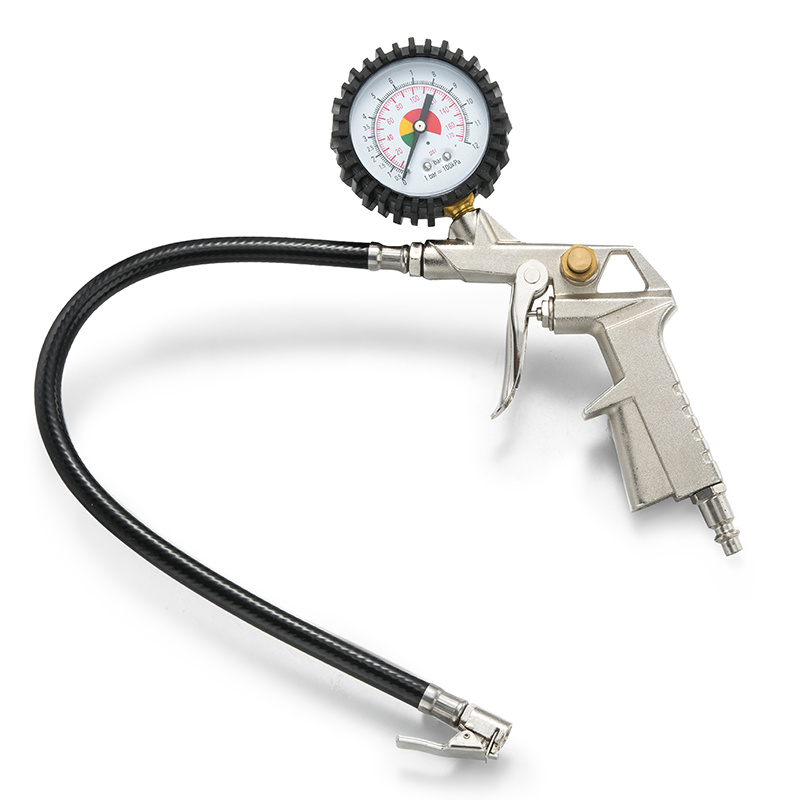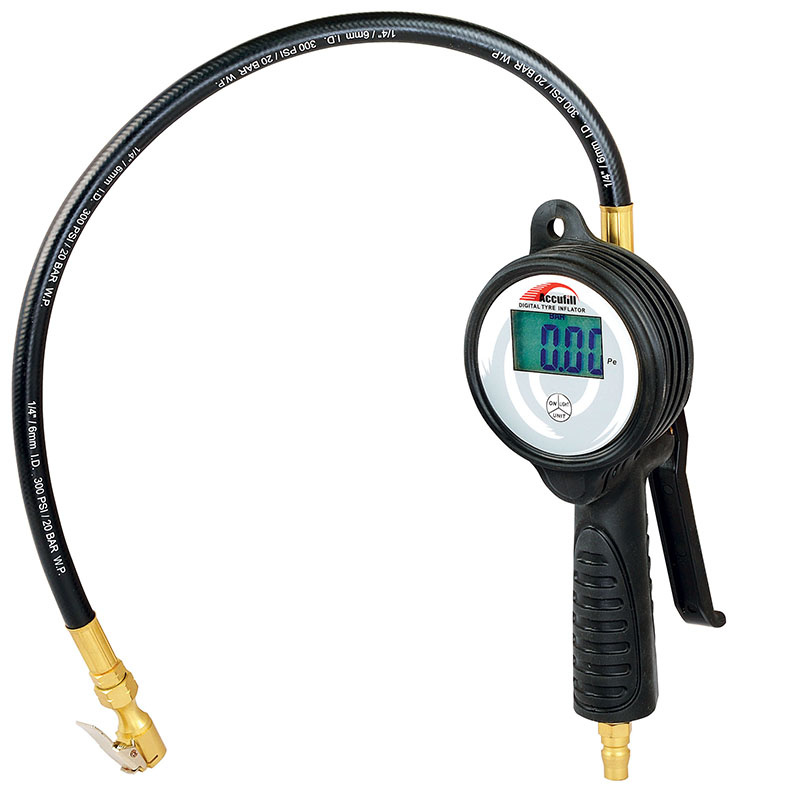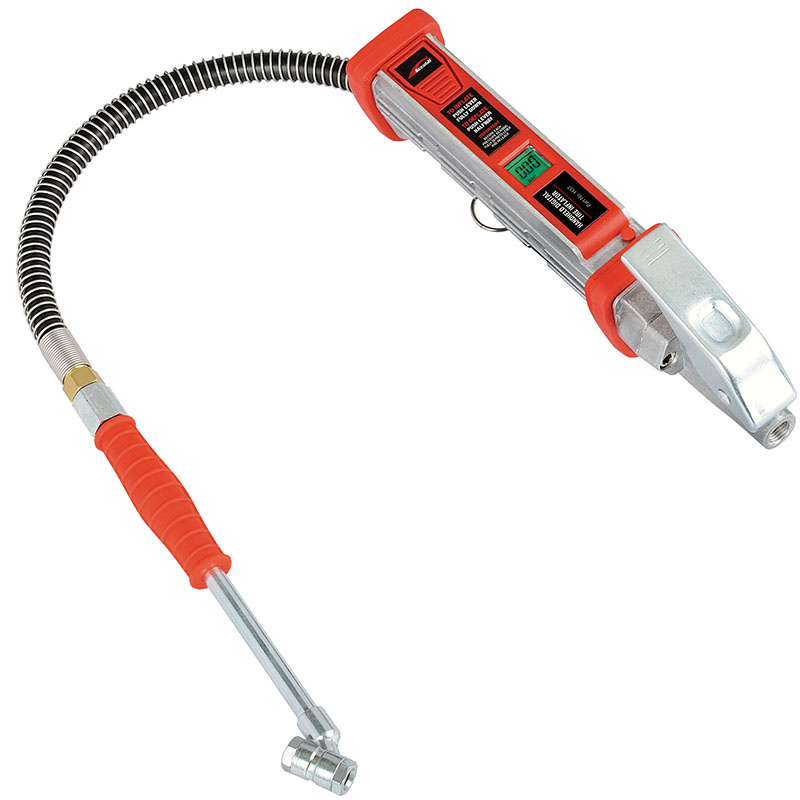Choosing a tyre inflator gauge involves considering several factors to ensure it meets your needs accurately and efficiently. Here’s a guide to help you make an informed decision:



Key Considerations
Type of Gauge
Analog Gauge: Traditional dial gauge, easy to read and reliable, does not require batteries.
Digital Gauge: Offers more precise readings, easier to read in low light conditions, typically require batteries.
Accuracy and Precision
Look for a gauge with high accuracy, usually within ±1% of the actual pressure. Check for gauges that comply with ANSI (American National Standards Institute) standards.
Pressure Range
Ensure the gauge covers the range of pressures you need. For most car tyres, a range up to 60 PSI is sufficient. For trucks or larger vehicles, you may need a higher range.
Durability and Build Quality
Choose a gauge made from robust materials like steel or brass, which can withstand wear and tear. A rubber casing can add extra protection.
Ease of Use
Display: Digital gauges should have a clear, backlit display for easy reading.
Valve Compatibility: Ensure the gauge fits the valves on your tyres (most common is Schrader valve).
Auto Shut-off: For digital gauges, this feature helps preserve battery life.
Ergonomics: Comfortable grip and easy operation are important for regular use.
Additional Features
Inflation and Deflation Capability: Some gauges can also inflate and deflate tyres, providing more functionality.
Hose Length: A longer hose can make it easier to reach all tyres, especially on larger vehicles.
Backlight: Useful for reading the gauge in low light conditions.
Storage Case: Helps keep the gauge protected and organized when not in use.
Price and Warranty
Compare prices to find a gauge that fits your budget while meeting your quality and feature requirements. Check for warranties as a sign of the manufacturer’s confidence in their product.
Summary
1.Choose between an analog or digital gauge based on your preference for reading and accuracy.
2.Ensure the gauge has a suitable pressure range and high accuracy.
3.Look for durable materials and additional protective features.
4.Check for ease of use, including display readability, valve compatibility, and ergonomic design.
5.Consider additional features like inflation/deflation capability, hose length, and backlight.
6.Compare prices and warranties for the best value.
By evaluating these factors, you can select a tyre inflator gauge that is accurate, durable, and easy to use, ensuring your tyres are always properly inflated.
Post time: Jun-26-2024




